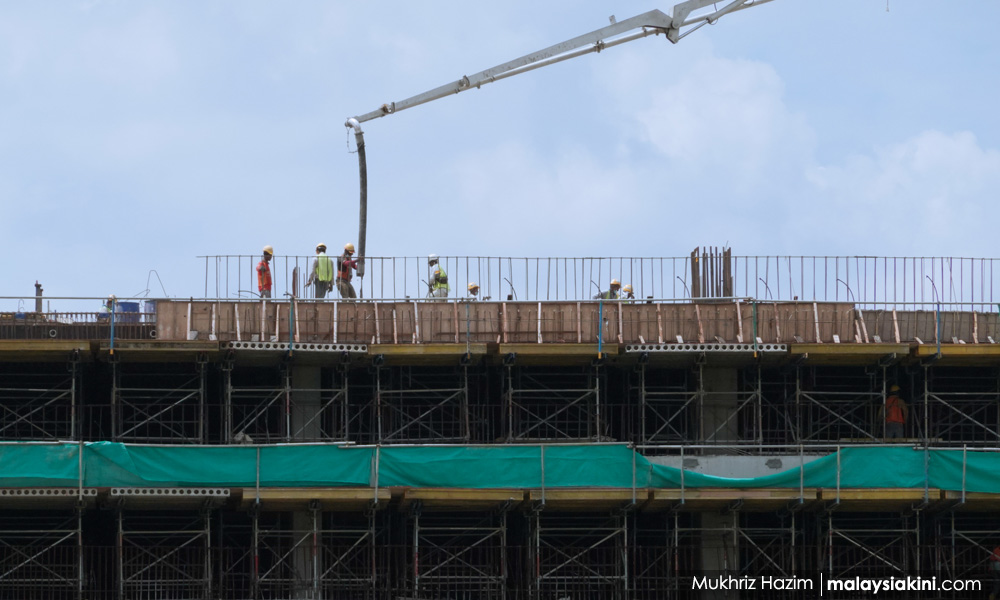MP SPEAKS | Budget 2022 revives key Pakatan Harapan measures to improve social security and boost employment, but falls short of highlighting any measures or strategies to evade an impending budget crisis in the near future.
The finance minister must be commended for agreeing to adopt a series of critical measures proposed by Harapan, as part of our extensive engagement provided for under the memorandum of understanding between the government and Harapan.
Most critically, the government is allocating RM40 billion under 'Program Semarak Niaga Keluarga Malaysia' (SemarakNiaga) to assist businesses to recover from the Covid-19 inflicted economic crisis - covering direct loans, guarantees and equity injection.
The fund is intended for all businesses, big and small. Harapan has proposed to the Finance Ministry that at least RM30 million must be allocated to assist micro and small-medium enterprises.
Other adopted measures include our proposal to extend Socso protection to the self-employed and gig workers. Budget 2022 has announced that the contribution scheme has been extended to include farmers and fisherfolk, hawkers, artists, tour agents and more, benefiting more than 810,000 Malaysians.
In addition, taking a leaf from the Harapan budgets for 2019 and 2020, RM120 million has been allocated for Chinese and Tamil vernacular schools, RM140 million for registered Islamic schools such as sekolah tahfiz, sekolah agama rakyat and sekolah pondok.
Employment and welfare initiatives
The minister also announced a new JaminKerja initiative which was allocated RM4.8 billion to provide hiring incentives for the unemployed, up to 30 percent of the employee’s wage. The programme is also extended specifically to women who have not been working for at least a year.
This is a revival of the Malaysians@Work programme which was announced by Harapan for Budget 2020 but abandoned by the Perikatan Nasional government.
The minister also extended the MySalam scheme to assist the B40 inflicted by critical illness and hospitalisation to include the children of the beneficiaries.
Some 125,000 patients have benefited from this programme introduced by Harapan to the tune of RM180 million. Unfortunately, our request for the programme to be extended to the M40, as promised under Harapan's Budget 2020 has once again been ignored.

The budget also allocated a RM2 billion strategic fund to attract strategic foreign direct investments by multinational corporations, effectively reviving another Harapan Budget 2020 measure which was abandoned by the Muhyiddin Yassin government.
Other successful Harapan programmes have also been extended such as i-Suri, renamed as ‘Program Kasih Suri Keluarga Malaysia’ which has been allocated an additional RM80 million.
Even for tax measures, they have only expanded on the sugar tax introduced under the Harapan administration, and reiterated the excise tax on vape and e-cigarettes, which was already announced last year.
Impending budget crisis
However, Budget 2022 has also failed to address, whether in terms of strategy or measures, an impending budget crisis that is set to befall the government within the next three to five years.
As highlighted in the Budget 2022 fiscal outlook, the medium-term fiscal framework 2022-2024 estimated that government revenue will only hit 13.9 percent of the GDP over this period.
This is a decline from the expected 14.3 percent in 2022, cementing a longer-term decline from 15.9 percent (2020) and higher in prior years.
In simple terms, in future, the government will have less funds to spend, invest and influence the economic direction of the country.
What then becomes a double whammy on the discretionary spending by the government is the accelerating increase in fixed payments and charges, as a percentage of total spending.
These ‘fixed’ expenditures include emoluments, retirement charges (pension), debt service charges, grants and transfers to state governments.
For example, emoluments and retirement charges formed 45.5 percent of operating expenditure in 2018 but will increase to 49 percent in 2022.
What is more alarming is the massive rise of debt service charges from 13.2 percent in 2018 to 18.5 percent in 2022.
In essence, the reckless off-budget expenditure for megaprojects and scandals under Najib Abdul Razak’s BN administration is coming home to roost as the government commences payments for these debts.

Overall, these ‘fixed’ expenditures increased drastically from 62 percent of operating expenditure in 2018 to 70.9 percent projected in 2022.
This effectively means a major reduction of allocation for supplies and services, subsidies and social assistance and other miscellaneous expenses from 38 percent (2018) to 29.1 percent (2022), or an enforced 30.5 percent cut.
This ‘squeeze’ arising from the rapidly expanding fixed charges will culminate in a potential fiscal crisis in the medium term, exacerbated by the declining government revenue as a percentage of the GDP.
For the past two to three years, the tightening operating expenditure has been ‘eased’ by the special Covid-19 fund separately allocated by Parliament to meet the pandemic crisis.
Much of the government’s operating expenditure in the health sector as well as many grants and subsidies are placed under the Covid-19 fund. However, as the Covid-19 crisis recedes and the country recovers, the access to such extra-budgetary allocation will soon be limited, or shut altogether.
It is now critical for the Finance Ministry to address how they plan to avert the impending crisis as the measures must be put in place today, and not before it is too late.
TONY PUA is Damansara MP and DAP national publicity secretary.
The views expressed here are those of the author/contributor and do not necessarily represent the views of Malaysiakini.

